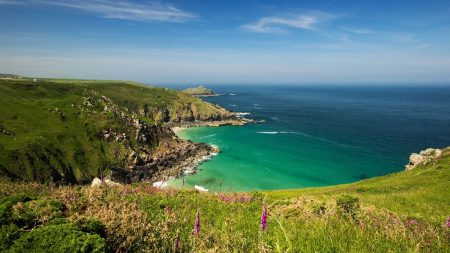Iceland’s Hidden Gems: Discovering the Road Less Traveled
In recent years, Iceland has transformed from a relatively obscure island nation into one of the world’s most sought-after travel destinations. The spectacular landscapes showcased in “Game of Thrones” and countless Instagram feeds have drawn visitors in record numbers to famous sites like the Blue Lagoon, Golden Circle, and Reynisfjara black sand beach. However, as these iconic destinations become increasingly crowded, a new trend is emerging among thoughtful travelers: the quest for Iceland’s hidden gems. More visitors are now seeking authentic experiences away from the tour buses and selfie sticks, venturing into the country’s lesser-known regions where local culture thrives and nature remains relatively untouched by mass tourism.
This shift comes at a crucial time for Iceland’s fragile ecosystems and small communities. Popular sites have been struggling with environmental degradation and infrastructure challenges as they accommodate visitor numbers that sometimes overwhelm these delicate natural wonders. Local Icelanders, while generally welcoming of tourism’s economic benefits, have expressed concern about preserving their cultural identity and natural heritage. In response, Iceland’s tourism authorities have begun promoting alternative destinations and sustainable travel practices, encouraging visitors to explore beyond the well-worn tourist path and distribute their economic impact more evenly throughout the country. These efforts align perfectly with the desires of many modern travelers who seek meaningful connections with places rather than simply checking famous landmarks off a bucket list.
The eastern and northern regions of Iceland offer particularly rewarding experiences for those willing to venture beyond the popular south coast. The East Fjords feature dramatic landscapes of narrow fjords cutting between towering mountains, with charming fishing villages like Seyðisfjörður and Borgarfjörður eystri providing glimpses into traditional Icelandic life. Here, visitors can enjoy fresh seafood at local restaurants, hike through pristine wilderness, and even spot puffin colonies without the crowds that gather at more famous viewing spots. Meanwhile, North Iceland centers around the vibrant city of Akureyri, offering access to magnificent geological wonders like Lake Mývatn with its otherworldly lava formations, bubbling mud pots, and the powerful Dettifoss waterfall—Europe’s most voluminous. These regions offer all the natural spectacle Iceland is famous for but with a more intimate, authentic atmosphere that allows for deeper appreciation and connection.
The Westfjords, perhaps Iceland’s most remote and untouched region, represent the ultimate off-the-beaten-path experience. This dramatic peninsula in the country’s northwest corner remains surprisingly uncrowded despite housing some of Iceland’s most spectacular landscapes. Visitors who make the journey along its winding coastal roads are rewarded with breathtaking fjords, the magnificent multi-tiered Dynjandi waterfall, and the extraordinary red sand beach at Rauðasandur. The area is also home to the Hornstrandir Nature Reserve, accessible only by boat and offering some of Europe’s most pristine hiking through landscapes where Arctic foxes outnumber human residents. In small communities throughout the Westfjords, traditional Icelandic culture remains vibrant, with local festivals celebrating everything from seafood to folk music, providing authentic cultural experiences that feel worlds away from the more commercialized attractions elsewhere.
Beyond geographic exploration, alternative experiences are emerging throughout Iceland that connect visitors more deeply with the country’s culture and natural environment. Farm stays offer opportunities to experience rural Icelandic life firsthand, with some properties allowing guests to participate in sustainable farming practices or traditional food production. Locally-guided hikes to lesser-known natural wonders provide both employment for residents and enriching experiences for visitors who benefit from generations of local knowledge. Cultural immersion opportunities are expanding too, from traditional craft workshops to cooking classes featuring Iceland’s distinctive cuisine. Even in more visited regions, travelers can find hidden spots by simply engaging with locals, who often direct interested visitors to their personal favorite places that rarely make it into guidebooks—secret hot springs, tucked-away waterfalls, and perfect spots for viewing the northern lights away from the crowds.
As Iceland continues navigating its complex relationship with tourism, the trend toward more distributed, sustainable, and authentic travel experiences benefits everyone involved. For travelers, venturing beyond the most Instagram-famous spots offers richer, more memorable experiences and genuine connections with local culture. For Iceland, spreading tourism more evenly helps protect overvisited natural wonders while bringing economic benefits to smaller communities that have seen less tourism development. Most importantly, this approach honors what makes Iceland truly special—not just its extraordinary landscapes, but its unique culture, history, and the warm hospitality of its people. As you plan your own Icelandic adventure, consider allowing time to explore beyond the must-see attractions and discover your own personal connection to this remarkable island nation. The real Iceland, many visitors discover, is found not where the tour buses stop, but along the quiet roads in between.







